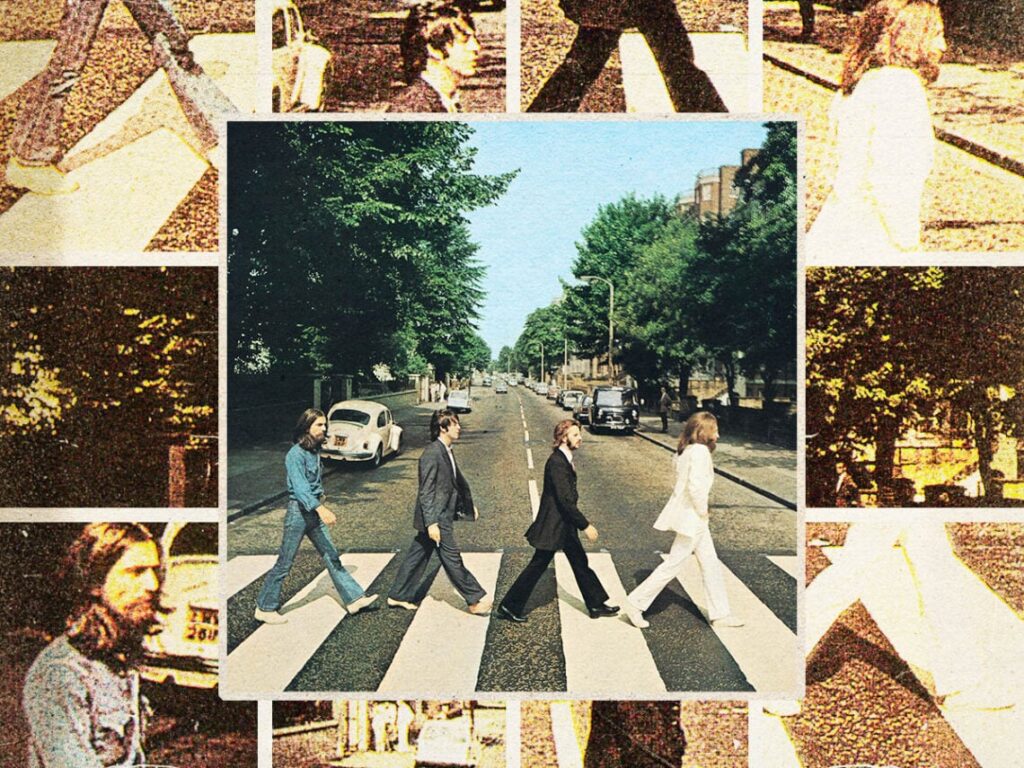How The Beatles bizarrely created a toilet overhaul at Abbey Road: “We have a very serious complaint”
 Posted On
Posted On
(Credits: Far Out / Album Cover)
The sort of music royalty that’s walked the halls of Abbey Road is somewhat hard to comprehend. After opening in 1931, the studio became globally famous for the iconic 1969 Beatles album. Since then, they have been host to some of music’s most iconic moments and modern records: Radiohead’s The Bends and Little Simz’s Sometimes I Might Be Introvert being the standouts.
Since iconic composer Sir Edward Elgar opened the studios in 1931, they’ve been the touchstone for expansive sounds. If artists wish to inject grander textures into their records, they undoubtedly visit. Speaking about Abbey Road, Paul McCartney once said: “Abbey Road is the only studio I’ve ever known in the world where you have one grand piano, one super grand piano, one medium grand. Everything, just there in the studio for normal use”.
Echoing through the halls are memories of the sort of glitz and glamour we, as fans, have come to mythologise with the music industry. We remember the heady days of decades past, which we would have loved to have experienced.
When The Beatles walked through the doors in February of 1969 to record their iconic LP, they were undoubtedly the world’s most prominent artist. With dangerous levels of hysteria forcing the band to call touring quits in 1966, the studio subsequently became their musical home and a place in which they would spend large portions of the day writing and recording.
1969 resulted in an accomplished album that showcases expansive compositions, textured orchestral arrangements, and beautifully layered harmonies. Ambitiously, the record’s B-side made use of the studios’ endless compositional opportunities and played as a 16-minute side of eight songs and fragments that play as one entire medley. The album has since been considered a blueprint for the realms of experimentation within production and set the tone for a culture of music recording that immerses artists within the depths of the studio.
Such a project makes the recording studio somewhat of a second home, and for stars as big as The Beatles, it would have required particular amenities. While the mythology of riders often involves elaborate sushi trains or certain coloured Skittles in a bowl, The Beatles’ requests were slightly different.
In an interview for the Abbey Road website, one of the studios’ most iconic audio engineers, Ken Townsend, once said: “The first time they came into Studio Two in 1968 after I had been promoted to Manager of Technical Operations, they obviously were made aware of this fact. I received a phone call in my office from their Road Manager, Mal Evans, saying the Beatles had a very serious complaint so would I come to Studio Two immediately please”.
He continued: “Feeling rather scared I went to the Control Room, where all four were stood behind the mixing console. Spokesman John Lennon, clutching a roll of EMI toilet paper, said, ‘Mr Townsend, we have a very serious complaint: the toilet paper in this place is too hard and shiny, and you can’t wipe your bum on it. Not only that, it has EMI Limited stamped on every sheet. If you do not do something about it we will notify the Chairman’. At the time, I did not realise it was possibly a wind-up, but we changed all the paper from that day on, so they did us a big favour”.
While The Beatles are heralded as the forefathers of modern music stardom and the wall upon which the subsequent mythologising of musicians and glamour was built, the story acts as a playful reminder of the realities behind closed doors. While The Beatles were modern stars by 1969 and bordering on the untouchable, they remained the playful teenagers we were introduced to during the early ’60s. And it was a jovial undercurrent that played an essential role in the creation of Abbey Road, a record that, amidst its experimental expanse and high-brow composition, was playful at its very heart.
[embedded content]
Related Topics


